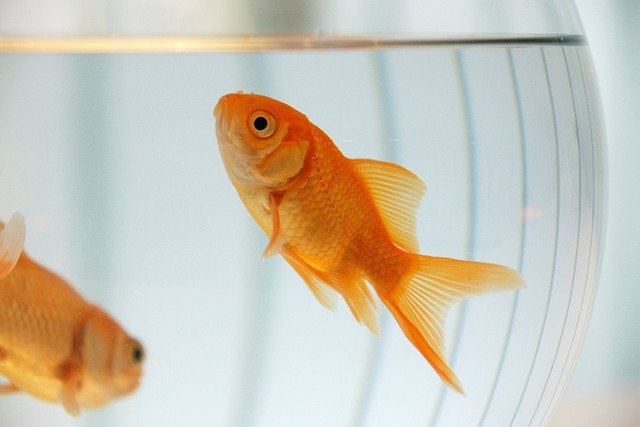
How to Care New Pet Fish in 2024
Welcoming a new pet fish into your home is a joyous occasion, but it comes with responsibilities. Proper care is essential for the health and happiness of your aquatic companion. In this comprehensive guide, we’ll explore step-by-step instructions and tips on how to care new pet fish in 2024.
Read More: How to Take Care of Gold Fish
Care New Pet Fish in 2024

Welcoming a New Pet Fish
Bringing a new pet fish into your home is more than an addition to your household; it’s an opportunity to build a unique connection. The excitement of choosing the perfect fish and setting up their new home is the beginning of a rewarding journey.
The Importance of Proper Care
While the joy of having a pet fish is undeniable, so is the responsibility. Proper care is crucial to ensure your fish thrives in its new environment. From setting up the aquarium to understanding their dietary needs, each step contributes to their overall well-being.
Setting Up the Aquarium
Choosing the Right Tank
The foundation of a healthy fish environment is an appropriately sized tank. Consider the space available and the specific needs of your chosen fish species. A crowded tank can lead to stress and health issues, so choose wisely.
Selecting Appropriate Substrate
Choosing the right substrate is more than an aesthetic decision. Different fish species have different substrate preferences to mimic their natural habitat. Research your fish’s needs and choose accordingly.
Installing Filtration Systems
Maintaining water quality is paramount. Install a reliable filtration system that suits your tank size and the type of fish you have. Regularly clean and maintain the filter to ensure it functions optimally.
Water Quality Matters
Maintaining the Right Temperature
Fish are highly sensitive to temperature changes. Invest in a reliable heater to maintain a stable water temperature that aligns with your fish species’ preferences.
Monitoring pH Levels
Regularly check and adjust the pH levels of your aquarium. Most fish thrive in slightly acidic to neutral water conditions. Test kits are readily available to help you monitor this essential parameter.
Ensuring Proper Oxygenation
Adequate oxygen levels are critical for your fish’s health. Consider using aeration devices to ensure proper oxygenation. Pay attention to the water circulation in your tank.
Selecting the Right Fish
Researching Compatible Species
Before adding new fish to your tank, research their compatibility with existing tankmates. Avoid aggressive or incompatible species that could disrupt the harmony in your aquarium.
Considering Size and Behavior
Consider the size and behavior of potential fish additions. Overcrowding can lead to stress and territorial conflicts. Provide enough space for each fish to swim freely.
Understanding Feeding Habits
Different fish species have specific dietary requirements. Research and provide a balanced diet to meet the nutritional needs of your fish. Some fish may prefer live or frozen food, while others thrive on flakes or pellets.
Feeding Your Pet Fish
Choosing High-Quality Fish Food
Selecting high-quality fish food is paramount. Look for options that provide essential nutrients and avoid over-processed or low-quality products. Quality nutrition contributes to the vibrancy and longevity of your fish.
Establishing a Feeding Schedule
Establish a consistent feeding schedule to regulate portion sizes and prevent overfeeding. Adjust the frequency based on the specific needs of your fish species. Some fish may require more frequent feeding than others.
Avoiding Overfeeding
Overfeeding is a common mistake in fish care. Monitor your fish’s eating habits and adjust the portion size accordingly. Overfeeding can lead to water quality issues and health problems.
Tank Maintenance
Regular Water Changes
Regular water changes are essential for removing toxins and maintaining water quality. Establish a routine based on your tank’s specific requirements. Consistent water changes contribute to a healthier environment.
Cleaning the Aquarium
Routine cleaning of the aquarium is crucial. Remove debris, algae, and any uneaten food to prevent the buildup of harmful substances. Clean the glass and decorations to keep the tank visually appealing.
Checking Equipment
Regularly check and maintain filtration and heating equipment. Address any malfunctions promptly to ensure a stable and comfortable environment for your fish.
Observing Behavior
Identifying Signs of Stress
Learn to recognize signs of stress in your fish. Changes in behavior, such as hiding, excessive swimming, or erratic movements, can indicate stress. Address stressors promptly to maintain a peaceful environment.
Recognizing Common Health Issues
Be vigilant for common health issues in fish, such as fin rot, ich, or fungal infections. Early detection and treatment are crucial for a swift recovery. Consult a veterinarian experienced in fish care if needed.
Seeking Veterinary Care
If you notice persistent health issues, consult a vet who specializes in fish care. Fish health can be delicate, and professional advice can be invaluable in maintaining the well-being of your pet.
Creating an Enriching Environment
Adding Decorations and Plants
Enhance your aquarium’s aesthetic appeal by adding decorations and live plants. Ensure they are safe for your fish and contribute to a stimulating environment. Live plants also contribute to water quality by absorbing nitrates.
Providing Hiding Spots
Create hiding spots with decorations or plants to give your fish a sense of security. This is especially important for shy or territorial species. Having hiding spots reduces stress and promotes natural behavior.
Offering Variability in Lighting
Varied lighting conditions mimic natural settings and contribute to the overall well-being of your fish. Invest in adjustable lighting systems for day and night cycles. Pay attention to the lighting preferences of your specific fish species.
Interacting with Your Fish
Gentle Handling Techniques
Handle your fish with care, minimizing direct contact to avoid stress or injury. Some fish tolerate handling better than others, so pay attention to your fish’s reactions.
Stimulating Play Activities
Contrary to popular belief, fish can be entertained. Stimulate your fish with floating toys, mirrors, or moving objects. Providing mental stimulation contributes to a healthy and happy fish.
Observing Behavioral Cues
Pay attention to your fish’s behavior to understand their preferences and needs. Each fish has a unique personality, and observing their cues helps in creating a more personalized care routine.
Training Your Fish
Simple Tricks and Commands
Surprisingly, fish can be trained to perform simple tricks or follow commands. Use positive reinforcement techniques, such as offering treats or praise, to encourage desired behaviors.
Using Positive Reinforcement
Positive reinforcement strengthens the bond between you and your fish. When your fish exhibits a desired behavior, reward them with treats or praise. This encourages them to repeat the behavior.
Building a Bond
Consistent interaction and positive experiences build a strong bond between you and your fish. While it may not be the same as bonding with a dog or cat, the unique connection with your fish can be just as fulfilling.
Addressing Behavioral Issues
Aggression Among Tankmates
Address aggression promptly by identifying and removing aggressive individuals. Provide sufficient hiding spots to reduce territorial conflicts. Research the specific behaviors of your fish species to understand normal interactions.
Unusual Swimming Patterns
Unusual swimming patterns may indicate health issues. Monitor your fish closely, and consult a vet if irregularities persist. Changes in swimming behavior can be early indicators of underlying health problems.
Excessive Hiding
Excessive hiding may suggest stress or discomfort. Evaluate the tank environment and make adjustments to create a more suitable habitat. Ensure hiding spots are available, and the tank conditions are optimal.
Traveling with Your Fish
Preparing for the Journey
Planning to travel with your fish requires careful preparation. Secure a suitable container, ensure stable water conditions, and minimize stress during transportation. Consider the duration of the journey.
Ensuring Safe Transportation
Transport your fish in a well-sealed container to prevent spills and temperature fluctuations. Keep the travel duration as short as possible to reduce stress. Consider using insulated containers for temperature-sensitive species.
Acclimating to New Environments
Upon reaching your destination, acclimate your fish gradually to the new environment. Float the container in the new tank for some time to equalize temperatures. Monitor your fish for signs of stress and acclimate them slowly.
Socializing Your Fish
Introducing Tankmates Gradually
When introducing new fish to your tank, do it gradually to reduce stress and aggression. Observe interactions closely during the initial stages to ensure compatibility. Some species may require more time to adjust.
Monitoring Social Interactions
Observe social interactions between fish to ensure compatibility. Be prepared to separate individuals if conflicts arise. Providing adequate hiding spots and territories can reduce territorial disputes.
Recognizing Compatibility Issues
If compatibility issues persist, consider rehoming or separating fish to maintain a harmonious tank environment. Some fish are better suited for solitary living, while others thrive in a community setting.
Documenting Your Fish’s Journey

Keeping a Fish Journal
Maintaining a fish journal is an excellent way to track your fish’s progress. Record observations, feeding habits, and any changes in behavior. This helps in detecting early signs of health issues.
Capturing Memorable Moments
Capture photos and videos of your fish during their daily activities. Share these moments on social media to connect with fellow fish enthusiasts. Documenting your fish’s journey adds a personal touch to the experience.
Sharing Experiences on Social Media
Join online fishkeeping communities to share your experiences and learn from others. Engaging with a community of fish enthusiasts provides valuable insights and fosters a sense of camaraderie.
Conclusion
Reflecting on the Joy of Pet Fish Ownership
Caring for a pet fish is a journey filled with joy and learning. Reflect on the unique bond you’ve built with your fish and appreciate the enrichment they bring to your life. The journey of pet fish ownership is as rewarding as the destination.
Continuous Learning and Adaptation
Fish care is a dynamic process. Stay informed about the latest developments in fishkeeping, adapt to your fish’s changing needs, and embrace the continuous learning experience that comes with pet ownership. Your commitment to their well-being ensures a fulfilling life for your aquatic companions.
Read More: Top Freshwater Fish for Beginners
Frequently Asked Questions
- How often should I feed my pet fish? Feed your fish 1-2 times a day, adjusting the portion size based on their appetite and dietary needs.
- What signs indicate that my fish is stressed? Watch for changes in behavior, color, or appetite. Excessive hiding or unusual swimming patterns can also be signs of stress.
- Can I keep different species of fish together in the same tank? It depends on the species. Research compatibility, size, and behavior before introducing new tankmates.
- How can I train my fish to perform tricks? Use positive reinforcement, be patient, and start with simple tricks. Reward desired behaviors with treats or praise.
- Is it necessary to have live plants in the aquarium? Live plants are not mandatory, but they contribute to a stimulating environment and can enhance the overall well-being of your fish.








One Comment